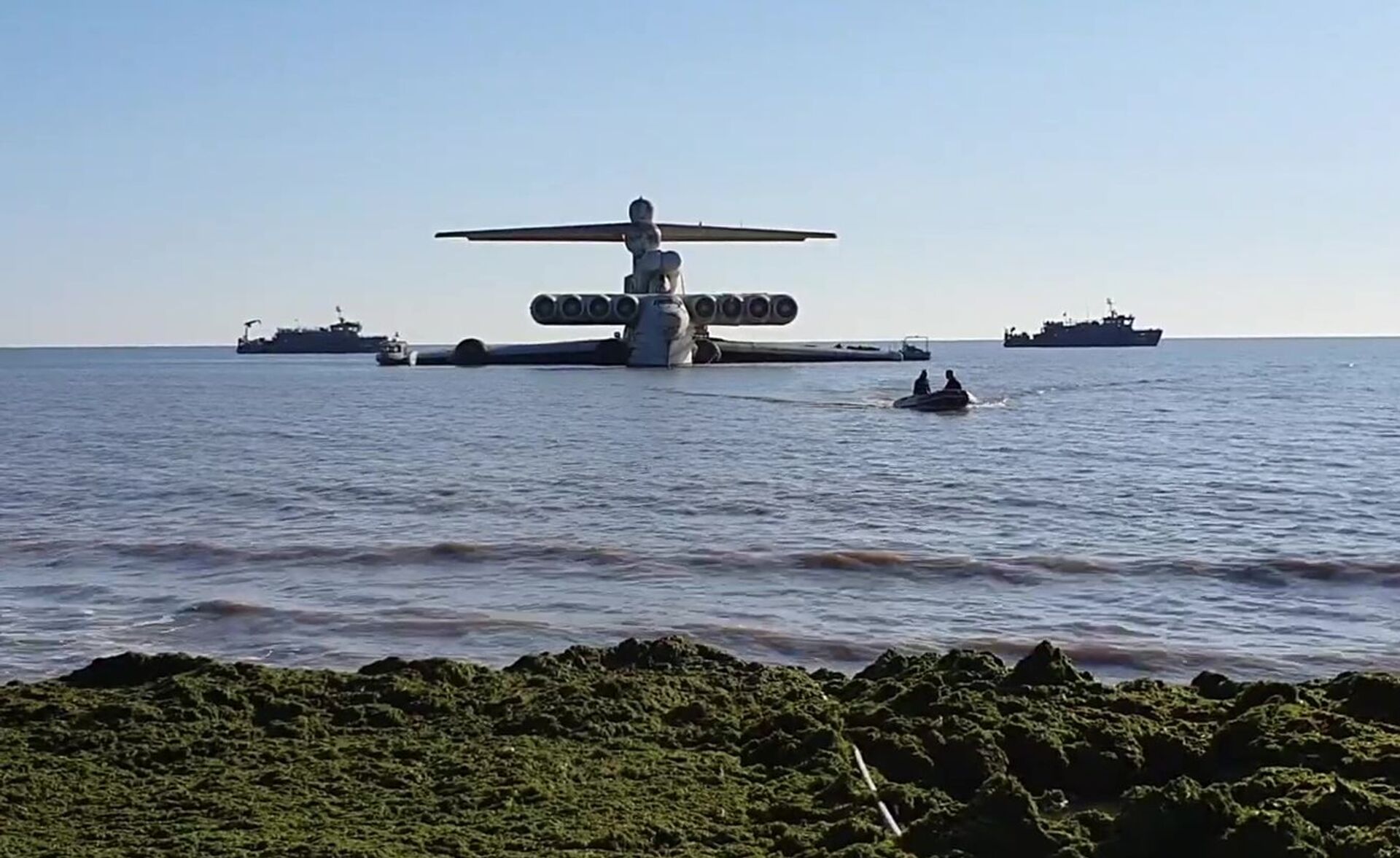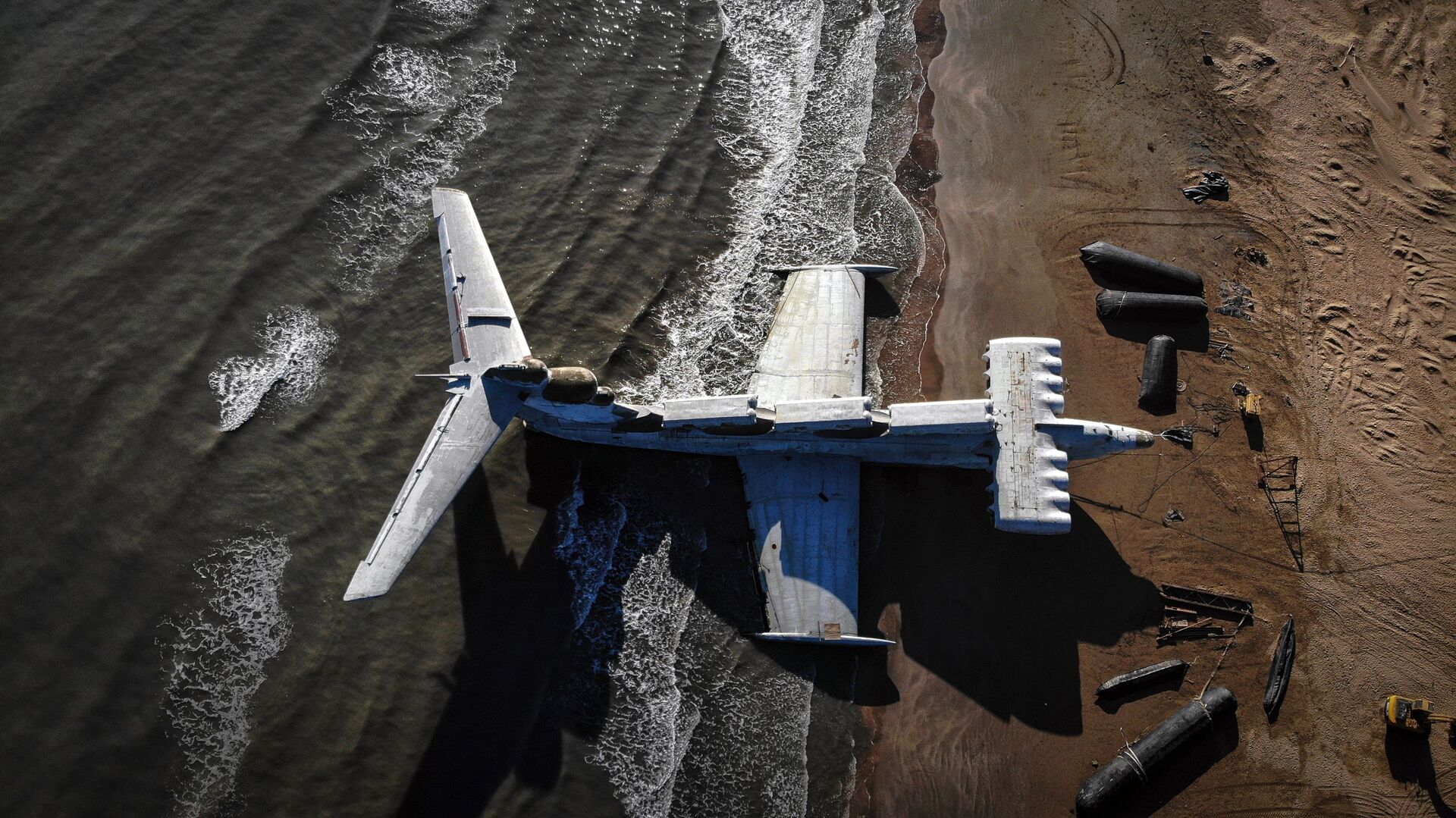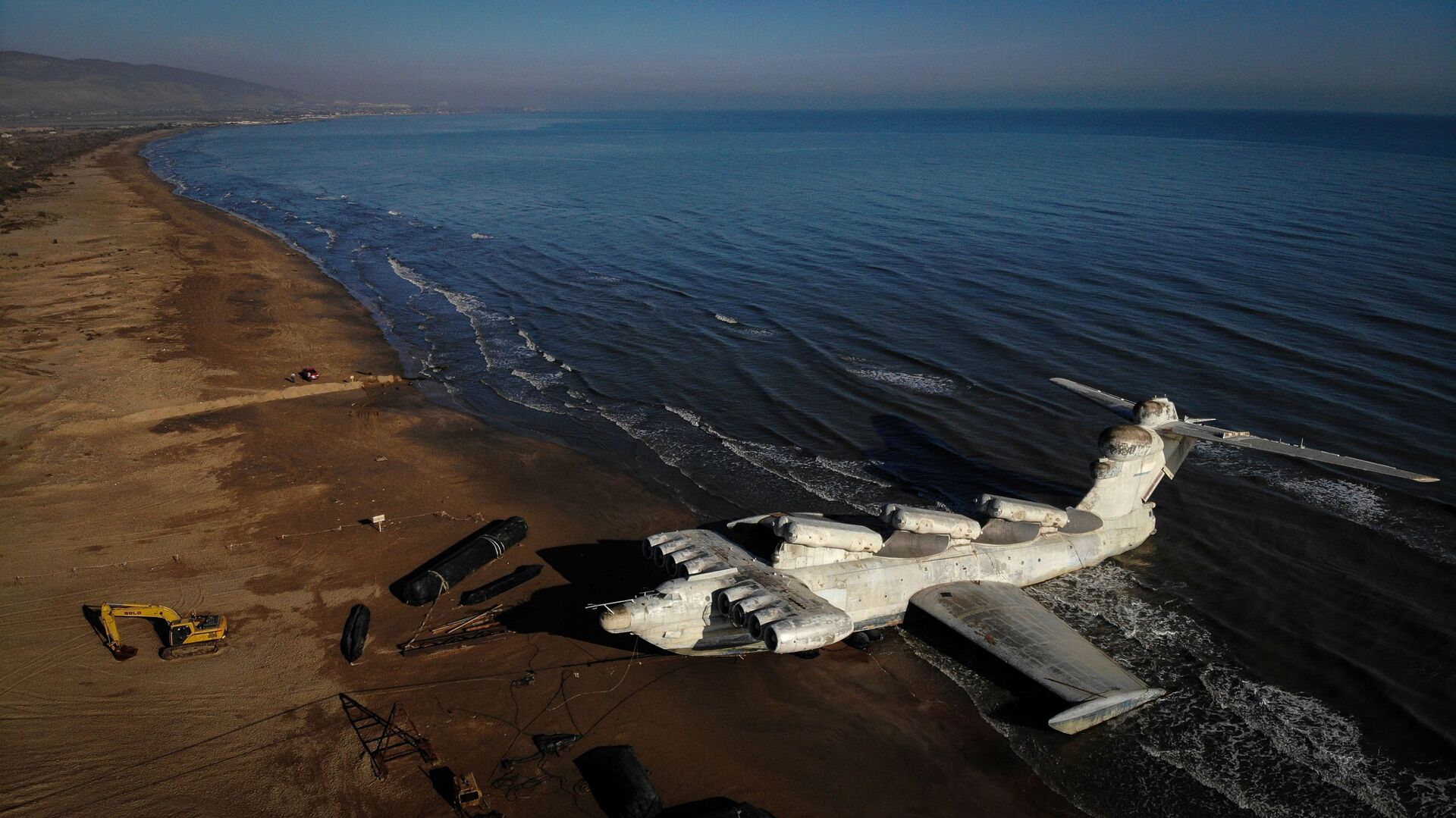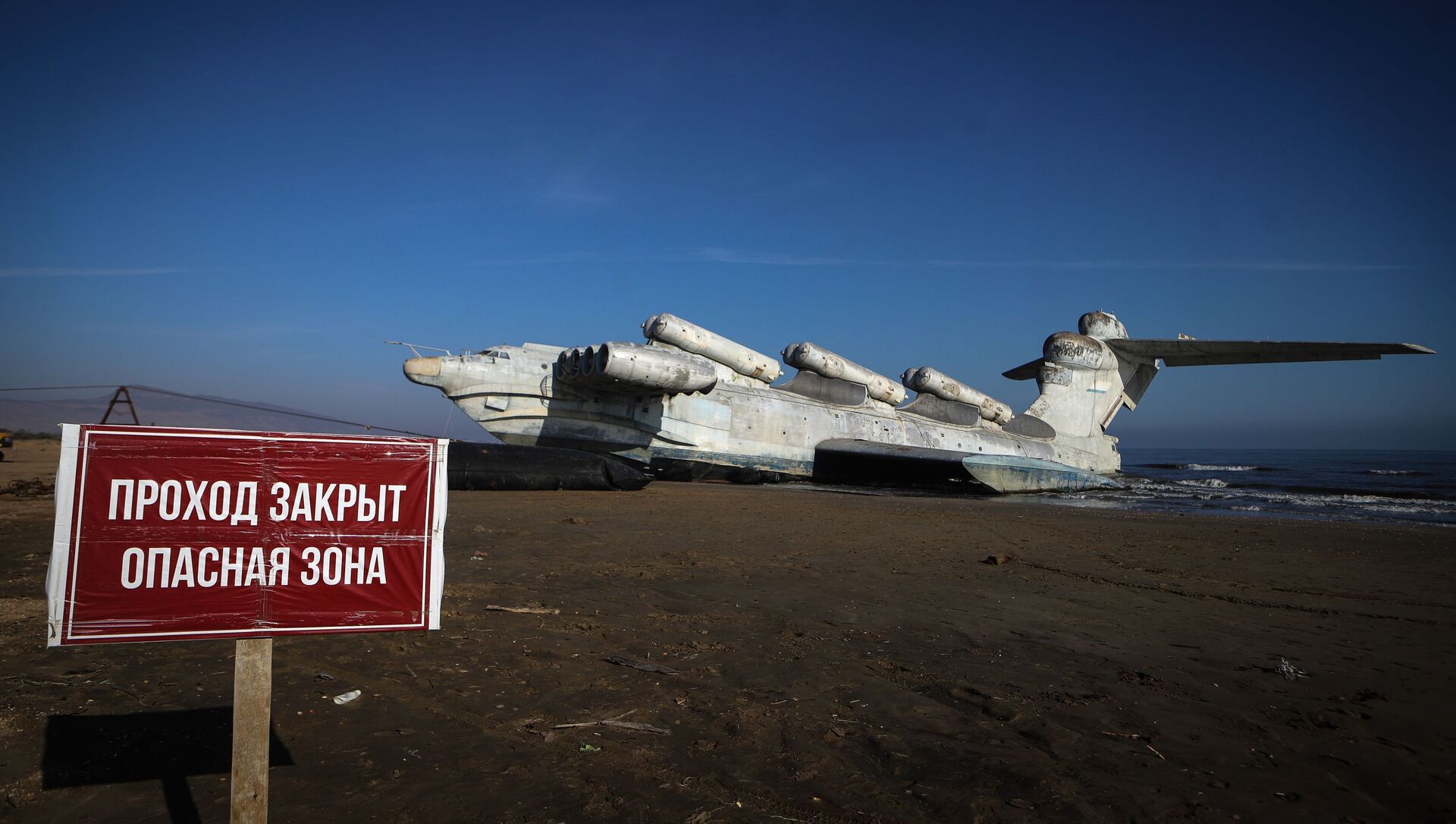https://sputnikglobe.com/20210323/russian-caspian-sea-monster-that-alarmed-cia-during-cold-war-to-be-turned-into-tourist-attraction-1082428013.html
Russian 'Caspian Sea Monster' That Alarmed CIA During Cold War to Be Turned Into Tourist Attraction
Russian 'Caspian Sea Monster' That Alarmed CIA During Cold War to Be Turned Into Tourist Attraction
Sputnik International
The sudden emergence of a new Soviet aircraft of unknown design and purpose caused the CIA to start worrying, even to the point of creating a dedicated... 23.03.2021, Sputnik International
2021-03-23T13:03+0000
2021-03-23T13:03+0000
2021-03-23T13:03+0000
https://cdn1.img.sputnikglobe.com/img/07e5/03/17/1082428181_0:310:3072:2048_1920x0_80_0_0_75e9ff36b7a721a1f6ab5a7d9da65383.jpg
russia
Sputnik International
feedback@sputniknews.com
+74956456601
MIA „Rossiya Segodnya“
2021
Tim Korso
https://cdn1.img.sputnikglobe.com/img/07e6/03/0d/1093831826_0:0:216:216_100x100_80_0_0_e3f43a960af0c6c99f7eb8ccbf5f812c.jpg
Tim Korso
https://cdn1.img.sputnikglobe.com/img/07e6/03/0d/1093831826_0:0:216:216_100x100_80_0_0_e3f43a960af0c6c99f7eb8ccbf5f812c.jpg
News
en_EN
Sputnik International
feedback@sputniknews.com
+74956456601
MIA „Rossiya Segodnya“
Sputnik International
feedback@sputniknews.com
+74956456601
MIA „Rossiya Segodnya“
Tim Korso
https://cdn1.img.sputnikglobe.com/img/07e6/03/0d/1093831826_0:0:216:216_100x100_80_0_0_e3f43a960af0c6c99f7eb8ccbf5f812c.jpg
military & intelligence, newsfeed, russia
military & intelligence, newsfeed, russia
Russian 'Caspian Sea Monster' That Alarmed CIA During Cold War to Be Turned Into Tourist Attraction
The sudden emergence of a new Soviet aircraft of unknown design and purpose caused the CIA to start worrying, even to the point of creating a dedicated, purpose-built drone to spy on the "monster's" tests carried out in the Caspian Sea.
A mighty beast that once traversed the waters of the Black Sea is finally getting the retirement it deserves – the only Lun-class ekranoplan, the MD-160, has been towed to the Republic of Dagestan, Russia and is now being repurposed to become a tourist attraction. Visitors will reportedly be able to look inside the 300-tonne machine, which served first in the Soviet and then in the Russian Navy until being retired in the late 1990s.
Despite being exclusively deployed at sea, ekranoplans are not technically ships, despite being classified as such by the International Maritime Organisation. Nor is it an aircraft in the usual sense. It flies roughly four metres above the water relying on its wings and the ground effect – an aerodynamic force created by the air reflected against the surface of water.
The USSR developed and built several models of ekranoplans, but the MD-160 was the only Lun-class vehicle built except for the prototype craft, which crashed after 15 years of tests in the Caspian Sea. The latter were noticed by the CIA in the middle of the Cold War, leaving the agency puzzled about the design and purpose of the ship, which they dubbed the "Caspian Sea Monster".
The spy agency even devised a dedicated drone to watch over the Lun ekranoplan's trials, learning in the process that it was an aircraft capable of both transporting forces and landing missile strikes against enemy ships using P-270 Moskit (Mosquito) guided missiles fired from six launchers.







